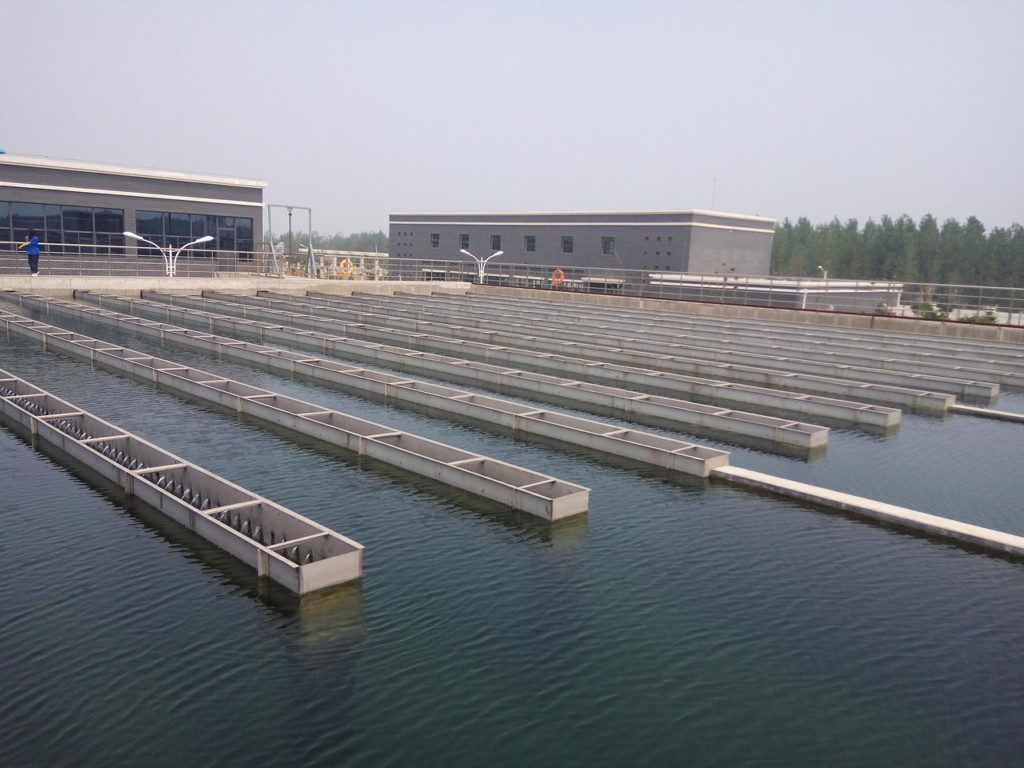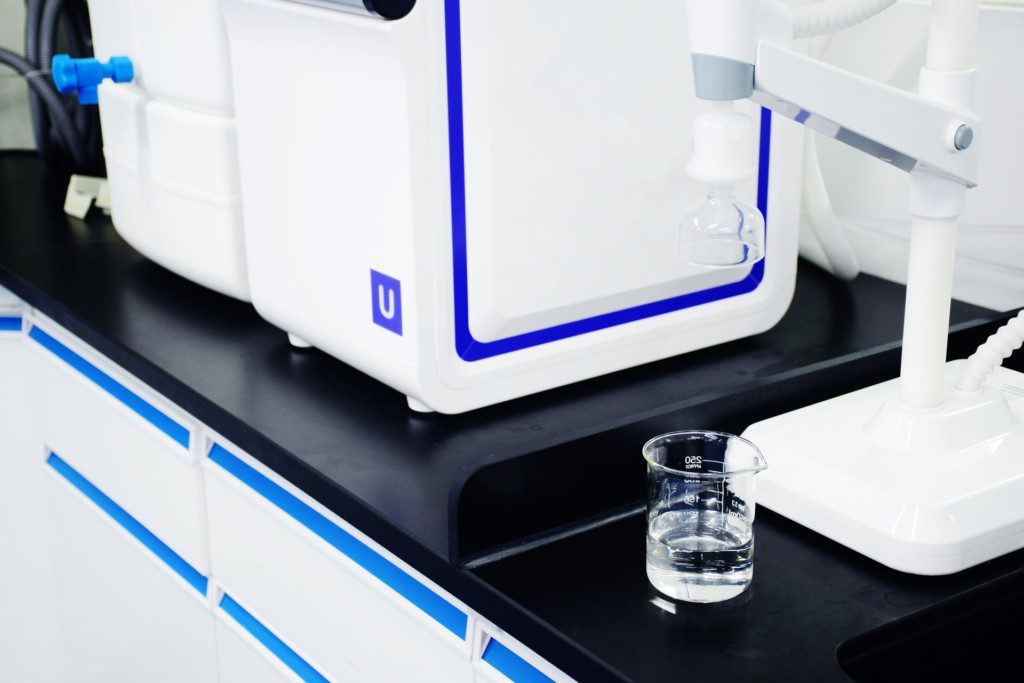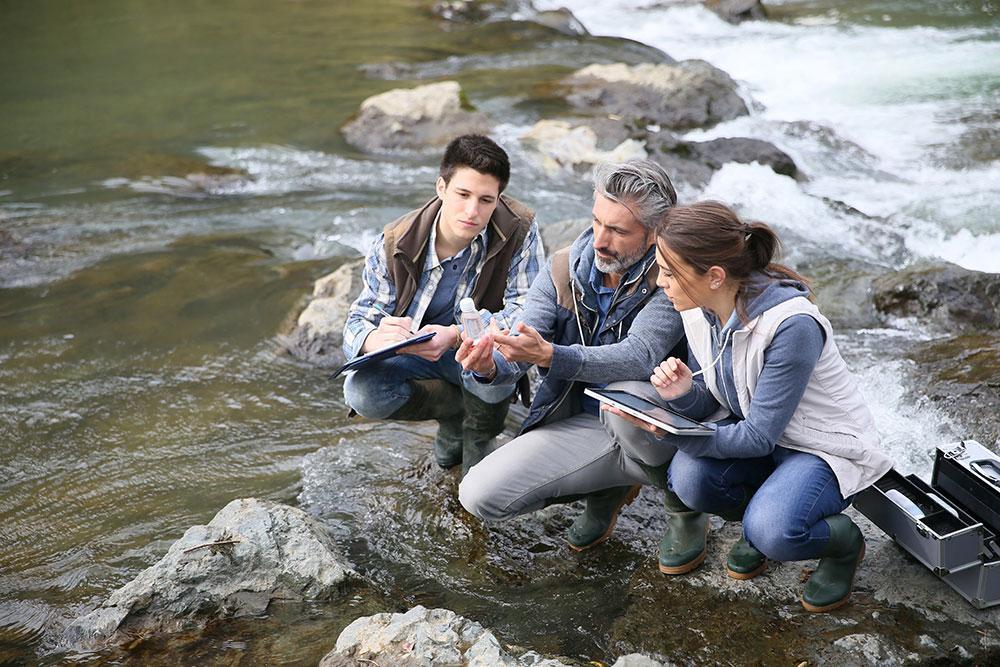10/09/2023 | Water Measurement Tips & Tricks | 11 MINUTE READ
Pretreatment to Protect Filtration Equipment and Water Prefilter

Water is one of our most precious resources; ensuring its purity and safety is paramount. Filtration is a standard method to remove impurities and contaminants from water, making it suitable for various applications, from water treatment to industrial processes. However, before water can be efficiently filtered, it often requires pretreatment to safeguard equipment and optimize filtration. This article will explore the importance of pretreatment in water filtration, the various pretreatment methods, advanced technologies, optimization strategies, and real-world applications.
Importance of Pretreatment in Water Filtration

Significance of Efficient Pretreatment
Efficient pretreatment is the foundation of a reliable and cost-effective filtration process. Without proper pretreatment, water may contain particles, chemicals, microorganisms, or hardness that can damage filtration equipment, reduce the lifespan of membranes, increase maintenance costs, and compromise the quality of the filtered water.
Preventing Damage to Filtration Equipment
One of the primary objectives of pretreatment is to protect filtration equipment, such as membranes, from fouling and scaling. Fouling occurs when suspended particles, organic matter, or microorganisms accumulate on the surface of membranes, obstructing water flow. Scaling, conversely, results from the precipitation of minerals on the membrane surface, reducing filtration efficiency. Pretreatment helps mitigate these issues, extending the life of filtration equipment.
Pretreatment Methods for Water Purification
Pretreatment is a crucial step in water purification, preparing the water for subsequent filtration and disinfection processes. Various pretreatment methods are employed to remove impurities and enhance the effectiveness of downstream treatment stages.
Prefiltration Techniques
Prefiltration serves as the initial defense against large particles and debris that could damage sensitive filtration equipment. These contaminants, such as sand, silt, and gravel, can clog filters and reduce their lifespan. Prefilters act as physical barriers, capturing these large particles before they reach the primary filtration system.
Several prefilter materials are available, each with its own filtration capabilities and applications. Common prefilter materials include:
- Sand: Sand filters are effective in removing coarse particles, typically ranging in size from 20 to 100 micrometers.
- Gravel: Gravel filters are designed to capture larger particles, typically between 2 millimeters and 2 centimeters in size.
- Geotextiles: Geotextiles are nonwoven fabrics that can filter particles ranging from 50 micrometers to several centimeters.
- Screens: Screens are perforated barriers that physically block particles larger than their pore size. Screen openings typically range from 0.25 millimeters to several centimeters.
The selection of the appropriate prefilter material and pore size depends on the specific characteristics of the water source and the desired level of filtration. Understanding the types and sizes of impurities present in the water is crucial for choosing the most effective prefilter configuration.
Chemical Pretreatment
Chemical pretreatment methods involve the addition of chemicals to alter the physical or chemical properties of impurities, making them easier to remove through subsequent filtration or sedimentation processes. Common chemical pretreatment techniques include:
Coagulation and Flocculation: Coagulation and flocculation are two interrelated processes that work together to remove suspended particles from water. Coagulation destabilizes these particles, causing them to lose their electrical charges and repel each other. Flocculation promotes the aggregation of these destabilized particles, forming larger, heavier flocs that can settle or be removed by filtration.
Coagulants are typically salts of aluminum or iron, which hydrolyze in water to form positively charged ions. These ions neutralize the negative charges on suspended particles, allowing them to collide and stick together. Flocculants are long-chain polymers that entangle and bridge the destabilized particles, forming larger flocs.
Chlorination and Dechlorination: Chlorination is a widely used disinfection method in water treatment, employing chlorine or its derivatives to destroy or inactivate microorganisms such as bacteria, viruses, and protozoa. Chlorine is a powerful oxidizing agent that disrupts the cellular processes of microorganisms, rendering them harmless.
However, excessive chlorine can lead to the formation of disinfection byproducts (DBPs), which may pose health concerns. Therefore, dechlorination is often necessary to remove residual chlorine before the water enters the distribution system. Common dechlorination methods include:
- Sulfur dioxide: Sulfur dioxide reduces chlorine to chloride ions, effectively removing free chlorine.
- Activated carbon: Activated carbon can adsorb both chlorine and DBPs, providing comprehensive dechlorination.
pH Adjustment and Scale Inhibition: The pH of water plays a critical role in various water treatment processes, including coagulation and corrosion control. Adjusting the pH to an optimal range can enhance the efficiency of these processes and prevent corrosion of pipes and equipment.
Scale formation occurs when dissolved minerals, such as calcium and magnesium, precipitate from water due to changes in temperature or pH. Scale deposits can clog pipes, reduce water flow, and interfere with heat transfer. Scale inhibitors are often added to water to hinder mineral precipitation and prevent scale formation.
The choice of chemical pretreatment methods depends on the specific impurities present in the water and the desired treatment objectives. A thorough understanding of the water quality and treatment goals is essential for selecting the most effective chemical pretreatment strategies.

Advanced Pretreatment Technologies for Water Purification
Advanced pretreatment technologies play a crucial role in modern water purification systems, providing enhanced removal of impurities and preparing water for downstream filtration and disinfection processes. These technologies offer improved performance, selectivity, and efficiency compared to traditional pretreatment methods.
Membrane-Based Pretreatment
Membrane-based pretreatment utilizes porous membranes to physically separate impurities from water. Different types of membranes have varying pore sizes, enabling the removal of particles of different sizes.
Microfiltration (MF) and Ultrafiltration (UF): MF and UF membranes are commonly used in pretreatment to remove suspended solids, colloidal particles, and microorganisms. MF membranes typically have pore sizes ranging from 0.1 to 10 micrometers, while UF membranes have smaller pores ranging from 0.001 to 0.1 micrometers.
These membranes offer effective removal of contaminants like bacteria, viruses, and protozoa, making them suitable for pretreatment in various water treatment applications. However, they may require additional measures, such as backwashing or chemical cleaning, to prevent fouling and maintain their filtration efficiency.
Nanofiltration (NF) for RO Systems: NF membranes provide a higher level of filtration compared to MF and UF, with pore sizes ranging from 0.001 to 0.01 micrometers. They are particularly useful in reverse osmosis (RO) systems, effectively removing turbidity, microorganisms, and hardness.
NF membranes offer several advantages over conventional pretreatment methods for RO systems:
- Improved Selectivity: NF membranes can selectively remove certain ions, such as divalent ions like calcium and magnesium, while allowing monovalent ions like sodium and chloride to pass through. This selective removal of hardness reduces the burden on the RO membranes, extending their lifespan.
- Reduced Fouling Potential: NF membranes are less prone to fouling compared to MF and UF membranes due to their smaller pore sizes. This reduces the need for frequent cleaning and maintenance, enhancing the overall efficiency of the pretreatment process.
Enhanced Pretreatment Schemes
Advanced pretreatment schemes combine different technologies to achieve more comprehensive and effective contaminant removal.
Integrated Membrane Systems (IMS): IMS integrates MF or UF pretreatment with RO systems. This combination provides several benefits:
- Consistent High-Quality Filtrate: IMS consistently produces high-quality filtrate, meeting stringent water quality requirements.
- Reduced Membrane Fouling: The pretreatment stage removes a significant portion of impurities, reducing the fouling potential of the RO membranes.
- Extended Membrane Lifespan: By reducing fouling and minimizing damage to the RO membranes, IMS extends their lifespan and lowers maintenance costs.
Combining Pretreatment Methods
In some cases, a combination of pretreatment methods is necessary to effectively address specific water quality challenges. For instance, pre-oxidation may be employed to break down organic compounds before membrane filtration or coagulation and flocculation may be used to remove fine particles prior to microfiltration.
Tailoring pretreatment to the unique characteristics of the water source is essential for optimal results. A thorough understanding of the water quality and treatment goals enables the selection of the most effective pretreatment strategies.
Optimizing Pretreatment for Water Quality
Pretreatment is a crucial stage in water purification, removing impurities and preparing raw water for subsequent treatment processes. The choice of pretreatment method depends on several factors, including the characteristics of the raw water, the desired water quality, and the downstream treatment processes.
Choosing the Right Pretreatment Method
The selection of an appropriate pretreatment method is essential for effective water purification. Several factors need to be considered, including:
- Raw water quality: The specific contaminants present in the raw water will dictate the type of pretreatment required. For instance, if suspended solids are a major concern, coagulation and sedimentation processes might be employed.
- Flow rates: The pretreatment system must be able to handle the volume of raw water being processed. This factor influences the size and configuration of the pretreatment equipment.
- Type of filtration system: The pretreatment method should be compatible with the downstream filtration system. For example, if a reverse osmosis membrane is used, the pretreatment should minimize the amount of dissolved solids in the water to protect the membrane.
Comprehensive water analysis plays a pivotal role in making informed decisions regarding pretreatment. By analyzing the raw water, treatment professionals can identify the specific contaminants present and their concentrations. This information guides the selection of the most effective pretreatment method.
Monitoring and Control in Pretreatment
Continuous monitoring and control of pretreatment processes are paramount to ensuring consistent water quality. This involves:
- Establishing water quality parameters: Identifying the critical water quality parameters that need to be monitored, such as turbidity, pH, and conductivity.
- Implementing monitoring equipment: Installing sensors and instruments at strategic points in the pretreatment system to continuously measure water quality parameters.
- Establishing control mechanisms: Developing control strategies to adjust pretreatment processes based on real-time monitoring data.
Automation and real-time data analysis play a significant role in optimizing pretreatment operations. Automated control systems can respond promptly to changes in raw water quality, ensuring consistent pretreatment performance. Real-time data analysis provides valuable insights into process efficiency and identifies potential issues before they can impact water quality.
Challenges and Solutions in Pretreatment
Pretreatment faces several challenges, including:
- Variations in raw water quality: The quality of raw water can fluctuate significantly, demanding pretreatment systems that can adapt to these changes.
- Fouling: Pretreatment equipment is susceptible to fouling by microorganisms, scale, and organic matter, which can hinder performance and increase maintenance costs.
- Energy consumption: Pretreatment processes often consume substantial energy, making it crucial to implement energy-efficient solutions.
Advances in technology and research are continuously addressing these challenges. Novel pretreatment methods, such as membrane filtration and advanced oxidation processes, are becoming increasingly efficient and cost-effective. Additionally, research into fouling control mechanisms and energy-saving technologies is contributing to more sustainable pretreatment practices.
By carefully selecting and optimizing pretreatment methods, water treatment facilities can consistently produce high-quality water while minimizing environmental impact and operating costs.

Energy Efficiency and Environmental Considerations
In many desalination and filtration processes, a significant amount of energy is consumed to overcome the high pressures required for these processes. This energy is typically lost in the form of high-pressure reject brine, which is discharged into the environment. However, efforts to recover energy from this reject brine can significantly improve the overall energy efficiency of these processes.
One promising approach is to use pressure-retarded osmosis (PRO) to extract energy from the high-pressure reject brine. PRO utilizes a semipermeable membrane that allows water to pass through while retaining salts. The pressure difference between the high-pressure brine and a low-pressure draw solution drives water molecules through the membrane, generating energy that can be used to power other processes or be fed back into the desalination system.
Another method for recovering energy from reject brine is to employ a turbine expander. This device extracts energy from the pressurized brine as it expands through a turbine, generating electricity that can be utilized within the treatment facility or fed into the power grid.
By implementing energy recovery technologies, desalination and filtration plants can significantly reduce their energy consumption and operating costs, making them more environmentally sustainable and cost-effective.
Sustainability Aspects of Pretreatment
Sustainable pretreatment practices go beyond energy efficiency and encompass a holistic approach that considers environmental impacts, resource conservation, and reducing chemical usage. These practices contribute to responsible water management and align with broader sustainability goals.
- Environmental Impacts: Pretreatment processes can have environmental implications, such as generating wastewater and releasing pollutants into the environment. Sustainable pretreatment practices minimize these impacts by employing cleaner technologies, optimizing chemical usage, and adopting waste minimization strategies.
- Resource Conservation: Pretreatment processes often consume water and other resources, making resource conservation a critical aspect of sustainability. Sustainable practices focus on reducing water consumption, recovering and reusing process water, and implementing water-efficient technologies.
- Chemical Usage: Pretreatment often involves the use of chemicals to remove contaminants and prepare raw water for subsequent treatment stages. Sustainable practices aim to minimize chemical usage by selecting less hazardous chemicals, implementing safer handling and storage procedures, and exploring alternative chemical-free pretreatment methods.
By adopting sustainable pretreatment practices, water treatment facilities can reduce their environmental footprint, conserve resources, and promote responsible water management practices.
Conclusion
In conclusion, pretreatment is a crucial step in water filtration, protecting equipment, and ensuring the delivery of clean and safe water. The choice of pretreatment method, advanced technologies, optimization strategies, and real-world applications collectively contribute to efficient and sustainable water treatment processes. As technology continues to evolve, the future of pretreatment holds promise for even more efficient and environmentally friendly solutions, ensuring the longevity of filtration equipment and the availability of clean water for generations to come.
Posted by Dominic O'Donnell on October 9, 2023
Sensorex is a global leader in the design and manufacture of quality sensors for water quality and process applications. The company offers more than 2000 sensor packages for pH, ORP, conductivity, dissolved oxygen, free chlorine, chlorine dioxide, UV transmittance and other specialty measurements, as well as a full line of sensor accessories and transmitters. Its expert technical support engineers solve analytical sensor challenges with custom designs and off the shelf products.




